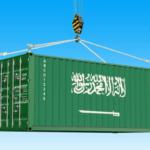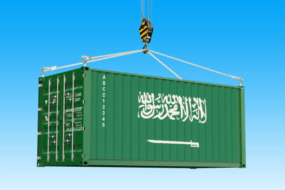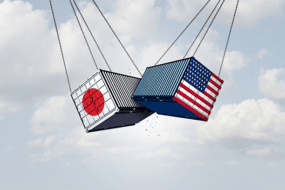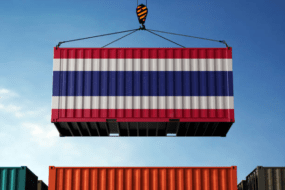- Home
- Trade News
- Bill of Lading: What You Need ...

Bill of Lading (BOL) is one of international trade’s most essential legal documents. It plays a crucial role in shipping, serving as a primary document for transporting goods from one place to another. Whether you’re an exporter, importer, or freight forwarder, understanding the bill of lading is vital for ensuring smooth logistics processes.
In this article, we will tackle about the different aspects of a bill of lading, including its types and functions. We’ll also explain when and how it is issued and the parties involved in the process, such as the Non-Vessel Operating Common Carrier (NVOCC) or freight forwarder, ensuring all aspects of shipping are covered comprehensively just for you.
Bill of Lading Definition
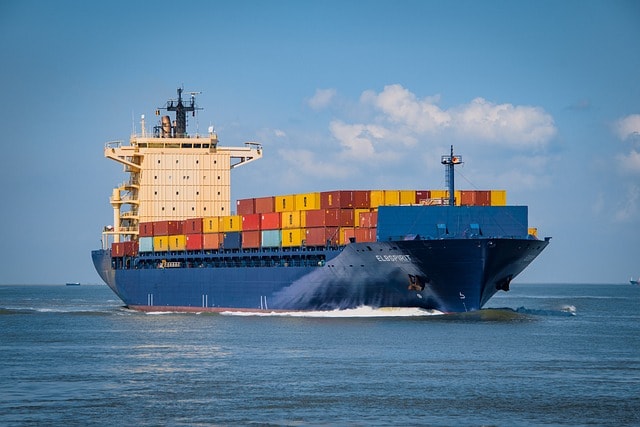
A bill of lading is a legal document issued by a shipping company, NVOCC, or freight forwarder that serves as a receipt for shipped goods. Along with the freight bill, it is also a title document that allows the lawful transfer of cargo ownership and acts as a carriage contract between the shipper and the international carrier.
In simple terms, it confirms what goods are being transported, where they are going, and who is responsible at different stages of the journey. It ensures that the shipper and the carrier agree on the transportation terms. Understanding the bill of lading is crucial for anyone involved in international shipping as it provides legal protection and clarifies responsibilities during the transit of goods.
Bill of Lading Objectives
The main objectives of a bill of lading include:
- The bill of lading serves as a receipt from the shipping line or freight forwarder, confirming that they have received the goods for shipment. It ensures the shipper has proof that the goods have been handed over to the carrier.
- It acts as a title document, allowing the cargo’s ownership to be transferred from the shipper to the consignee. This ensures that the consignee becomes the legal owner of the goods once the shipment reaches its destination.
- The bill of lading helps determine who pays the shipping charges. It clarifies whether the shipper or consignee will bear the cost, making the payment process straightforward.
- It provides commercial proof that the goods have been delivered to the consignee. This proof is essential for the shipper to receive payment for the goods once the delivery is completed.
The Bill of Lading Is Issued by the Carrier
The bill of lading is typically issued by the carrier (the shipping company or non-vessel operating company (NVOCC)) after the goods are received and ready to be shipped. Key parties involved in issuing a bill of lading include:
- The Shipper: The shipper is the individual or company that sends the goods for transportation. They are responsible for preparing the shipment and coordinating with the carrier to ensure the goods are ready for transit.
- The Carrier: The carrier is either a shipping company or an NVOCC that physically transports the goods from the point of origin to the final destination. Once they have received the goods and are ready to move them, they issue the bill of lading.
- The Consignee: The consignee is the person or organisation receiving the goods at the destination. They are mentioned on the bill of lading and are responsible for collecting the shipment upon arrival.
- Notify Party: The notify party is usually the consignee, but it can be another entity that needs to be informed when the goods reach their destination. This party is kept updated on the shipment’s status to ensure smooth delivery arrangements.
Function of a Bill of Lading
The bill of lading has three main functions:
- Receipt of Goods: The bill of lading serves as a formal receipt issued by the carrier, confirming that the goods have been received and are ready for transportation. It ensures that the shipper has proof that the cargo has been handed over for shipment.
- Title of Goods: It acts as a title document, allowing the legal transfer of ownership of the goods from the shipper to the consignee. This means that whoever holds the bill of lading has the right to claim the goods.
- Contract of Carriage: The bill of lading also functions as a carriage contract between the shipper and the carrier. It clearly outlines the terms and conditions for transporting the goods, ensuring both parties understand their responsibilities during the shipment.
When the Bill of Lading Is Issued
The carrier issues the bill of lading once the cargo has been successfully loaded onto the vessel or any other mode of transport, such as a truck, ship, or plane. This process typically takes place at the shipping company’s warehouse, port, or terminal, where the goods are being prepared for shipment. The carrier prepares the bill of lading as a legal document acknowledging the cargo’s receipt and providing details about its destination, type, and quantity. It is a crucial step in the logistics chain, as it ensures that the cargo has been properly documented for transportation.
Once the bill of lading is issued, the original document is handed over to the shipper. In addition to the original, multiple copies are made and distributed to various parties involved in the shipment process, such as the freight forwarders, banks, customs officials, and the consignee. These copies are vital for tracking the shipment, clearing goods at customs, and ensuring cargo release at its destination.
What Are the Different Types of Bills of Lading?
A bill of lading is not one-size-fits-all. Different types of lading bills are used in specific shipping situations. Let’s break them down in simple terms so you can understand how each one works.
Ocean Bill of Lading
An ocean bill is used when goods are being transported across the sea. This is the most common type of bill of lading in international trade, and it outlines the responsibility of the shipping company to deliver the goods.
Inland Bill of Lading
This bill is used when goods are moved over land, either by road or rail, usually within the same country. For example, if products must be driven to a port before being shipped overseas, an inland bill will cover the overland part of the journey.
Straight Bill of Lading
A straight bill is used when the goods are delivered to a specific person or company. It’s non-negotiable, meaning it can’t be transferred to anyone else. This type of bill is common when the payment for the goods has already been completed.
Order Bill of Lading
An order bill is negotiable, meaning the ownership of the goods can be transferred while they are in transit. This is often used when the shipper wants to sell the goods while they are still going to their destination.
Clean Bill of Lading
A clean bill confirms that the carrier received the goods in good condition, with no visible damages or issues.
Claused Bill of Lading
If the goods were damaged or there was a problem with the shipment (such as missing items), a claused bill would be issued, which records these problems.
Surrender Bill of Lading
In some cases, the shipper may release the goods to the consignee without presenting the original bill of lading. This is called a surrender bill and helps speed up the release process.
Air Waybill
An air waybill is like a bill of lading for air shipments. It lists the details of the goods transported by air and the freight forwarder involved.
House Bill of Lading and Master Bill of Lading
A house bill is issued by either the freight forwarder to their customer, while a master bill is issued by the shipping line to the freight forwarder. These are often used when freight forwarders combine shipments from different customers.
Switch Bill of Lading
A switch bill comes into play when the buyer or consignee changes while the goods are already in transit. This is common in international trade, where goods might be sold multiple times during shipping.
Other notable types of bills include:
- Through bill of lading: Covers multiple transportation methods, like land and sea.
- Non-negotiable bill: Cannot be transferred to a new owner during transit.
- Received for shipment bill: This indicates that the carrier has received the goods but hasn’t been loaded for shipment yet.
- Container bill: Specifically used for shipping containerized goods.
- Charter party bill: Used when a company leases a vessel to carry goods.
- Multimodal transport document: Used when more than one mode of transport (like sea and rail) is involved.
- Forwarders bill of lading: Issued by the freight forwarder for goods under their care.
- Stale bill of lading: Presented after the goods have already arrived.
- Short-term bill of lading: A brief version with limited information.
- Bearer bill of lading: Goods can be transferred to whoever holds the bill.
Bill of Lading Contents
A bill of lading typically contains the following information:
- Names and Addresses: This section includes the full names and addresses of the shipper (the person sending the goods) and the receiver (the person receiving them). It helps ensure that both parties are easily identified and located in case of confusion.
- Purchase Orders or Special Reference Numbers: These are crucial numbers that help track the shipment. They make it easier to release the freight for pickup or confirm its acceptance at delivery.
- Special Instructions: Any specific directions for the carrier, such as handling instructions or delivery guidelines, are recorded here. These instructions do not include extra services like requesting a lift gate or receiving a delivery notification.
- Date: This is where the pickup date of the goods is listed. It helps track the shipment and is used when creating shipping invoices to confirm when the freight was collected.
- Description of Items: The shipper must detail the items being shipped, including the number of units, their size and weight, and a brief description of what the goods are made of.
- Packaging Type: The type of packaging used, such as cartons, crates, pallets, or drums, is mentioned here. This helps the carrier understand how the items are packed and whether special handling is required.
- NMFC Freight Class: Freight shipments are categorised into 18 classes based on weight, size, and ease of handling. This classification helps determine the cost of shipping.
- Department of Transportation Hazardous Material Designation: If the goods being shipped are hazardous, it must be noted here. Hazardous materials have special shipping rules and require extra care during transport.
Why Search for Bill of Lading Information?
Understand Global Trade Dynamics
Accessing BOL data helps analyse market trends, track goods movement, and identify opportunities, enabling businesses to adapt to changing trade conditions effectively.
Monitor Specific Companies
BOL records reveal shipment volumes, trade routes, and partners of target companies, aiding in competitive analysis, supplier verification, and market research.
How to Search Bill of Lading Data in TradeDataPro
TradeDataPro simplifies accessing Bill of Lading data by providing an easy-to-use interface. Whether you’re looking for shipment details, consignee information, or port activities, this guide will walk you through the steps to search for BOL data efficiently.
Step 1: Log in to TradeData.Pro
Go to the TradeData.Pro website and enter your login credentials. Once logged in, you will be redirected to the dashboard, where various data fields and search options are available.
Step 2: Navigate to the Bill of Lading Section
From the dashboard, locate the Bill of Lading section. You will find a dedicated area to input your search criteria. Click on the Search country B/L Data button in Data Source to begin.
Step 3: Enter Search Criteria
In the Search tab, input the following details:
- Product Name or HS Code
- Bill of Lading Number: If you have a specific BOL number, enter it here for direct results.
- Consignee Name: You may also search using the consignee’s name for shipment tracking.
- Date Range: Set the date range for your search by specifying a start and end date.
You can further refine your search by adding filters such as:
- Origin Country or Destination Country
- Carrier Name
- Shipment Type (FCL, LCL, etc.)
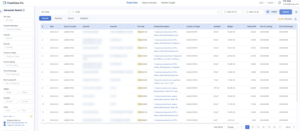
Step 4: Execute the Search
Once you have entered all the necessary details, click the Search button. TradeDataPro will then pull up all available records that match your query.
Step 5: View and Download Data
The results page will display a list of matching Bill of Lading records. You can click on any entry to view detailed shipment information, including:
- Shipper and Consignee
- Ports of Loading and Discharge
- Goods Description
You can export the data in CSV or Excel formats by clicking the Download button if required.
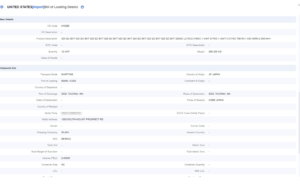
Step 6: Save or Print Data
For reporting or sharing purposes, you can save the search results directly to your system or print the details by selecting the Save or Print options at the top of the page.
Conclusion
The bill of lading is an indispensable legal document in international logistics. It acts as a title document, a shipment receipt, and a carriage contract, facilitating the smooth transfer of goods across borders. Different types of lading bills, such as ocean, inland, and order bills, are used depending on the transport method and the shipment terms. Understanding the various aspects of the bill of lading—from its issuance to the parties involved—ensures that goods are transported efficiently and in compliance with the law.
The bill of lading provides detailed shipment documentation, helping businesses receive goods on time, manage insurance coverage, and ensure that goods reach their final destination safely. Knowing the role and function of a bill of lading is important if you are involved in shipping or logistics. This will help you avoid complications, reduce risks, and streamline your logistics process. To stay updated on the latest shipping and logistics information, TradeDataPro provides 200+ countries data https://tradedata.pro/countries-covered/, helping you streamline your operations and get expert insights. Be sure to visit TradeDataPro today, and let us help you navigate the complexities of global logistics with ease and confidence!


